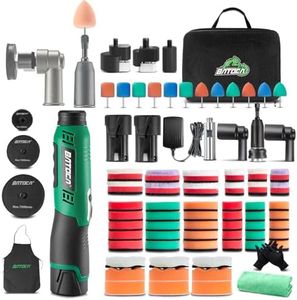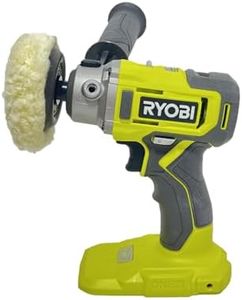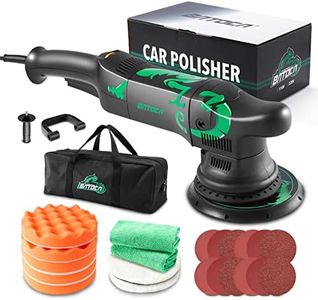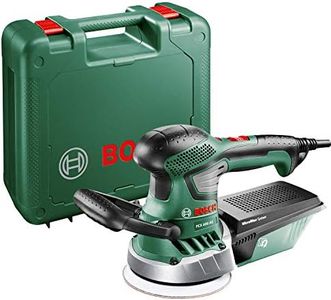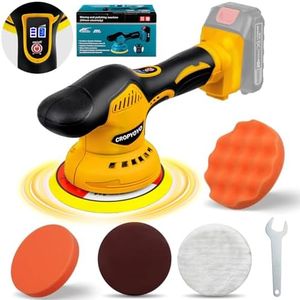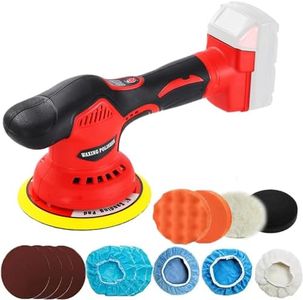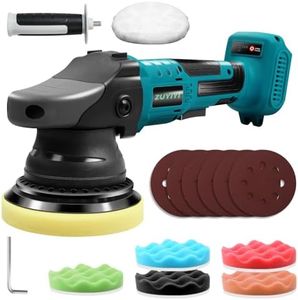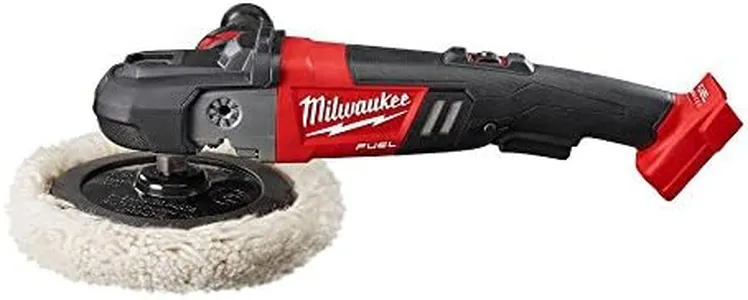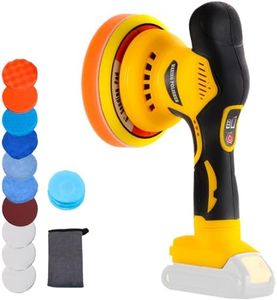We Use CookiesWe use cookies to enhance the security, performance,
functionality and for analytical and promotional activities. By continuing to browse this site you
are agreeing to our privacy policy
10 Best Orbital Polishers
From leading brands and best sellers available on the web.Buying Guide for the Best Orbital Polishers
When choosing an orbital polisher, it's important to understand how these tools work and what factors influence their effectiveness. An orbital polisher is primarily used for car detailing, helping you achieve a smooth, shiny finish on vehicle paintwork by spinning a pad in a random, orbital motion. Deciding on the right orbital polisher depends on your experience level, the condition of your vehicle’s paint, and how intensively you plan to use it. By understanding the key specifications, you can find a model that's comfortable, safe, and effective for your polishing needs.Orbital (Pad) SizeOrbital pad size refers to the diameter of the pad that attaches to the polisher. Common sizes range from about 3 inches to 6 or 7 inches. Smaller pads (around 3-4 inches) are great for tighter areas and more detailed work, like mirrors or bumpers, while larger pads (6-7 inches) cover bigger areas more quickly and are ideal for the main body panels. The right size for you depends on the size of things you’ll polish and the level of detail you want; if you mostly work on full car exteriors, bigger pads are convenient, but for intricate work, choose a smaller pad.
Orbit (Throw) SizeOrbit or throw size is the diameter of the circular movement that the polishing head makes. Smaller throws (roughly 8mm or less) are gentler and allow fine control, which is good for beginners or light polishing jobs. Larger throws (up to 21mm or more) are more aggressive, covering more area and working more quickly but may be harder for novices to manage. If you’re looking mainly to enhance shine and do basic maintenance, a smaller throw is safer, while bigger throws help speed up heavy correction jobs like removing deep scratches or oxidation.
Speed Settings (OPM – Orbits Per Minute)Speed settings, usually measured in orbits per minute (OPM), tell you how fast the pad moves. Variable speed is important for different tasks; slower speeds are better for spreading wax or sealant, while higher speeds are more efficient at removing scratches or heavy oxidation. Most orbital polishers let you adjust the speed; this flexibility means you can tailor the tool to your task and skill. As a beginner, having multiple speed options allows you to start slow for safety and confidence, then use higher speeds as your needs or experience grow.
Motor PowerMotor power, typically measured in amps or watts, indicates how strong the polisher’s motor is. Higher power motors can work longer and more consistently under pressure, which is helpful for doing multiple vehicles or tackling tough jobs. Lower power units are usually lighter and less tiring to hold but may bog down if you push too hard. For occasional, light polishing on a single car, a lower power model is usually fine, but if you plan to detail frequently or correct tough paint defects, choose a more powerful motor.
Weight and ErgonomicsWeight and ergonomics refer to how comfortable and easy the polisher is to handle. Lightweight polishers are easier to maneuver, especially for long sessions or if you have limited experience, while heavier units might offer more stability but can be tiring. Look for handles that fit your grip well, and check for features like cushioned grips or vibration reduction. Your strength and how long you plan to use the tool at a stretch should guide your choice—a more comfortable, lighter model is better for beginners or home users.
Safety FeaturesSafety features help prevent accidents or user mistakes. Features like soft start (which brings the pad up to speed gradually), electronic speed control, or overload protection are valuable, especially for beginners. These prevent the polisher from jerking unexpectedly or overheating. If you’re new to polishing or want extra assurance, choose a machine with built-in safety options to help protect both you and your vehicle’s surface.
